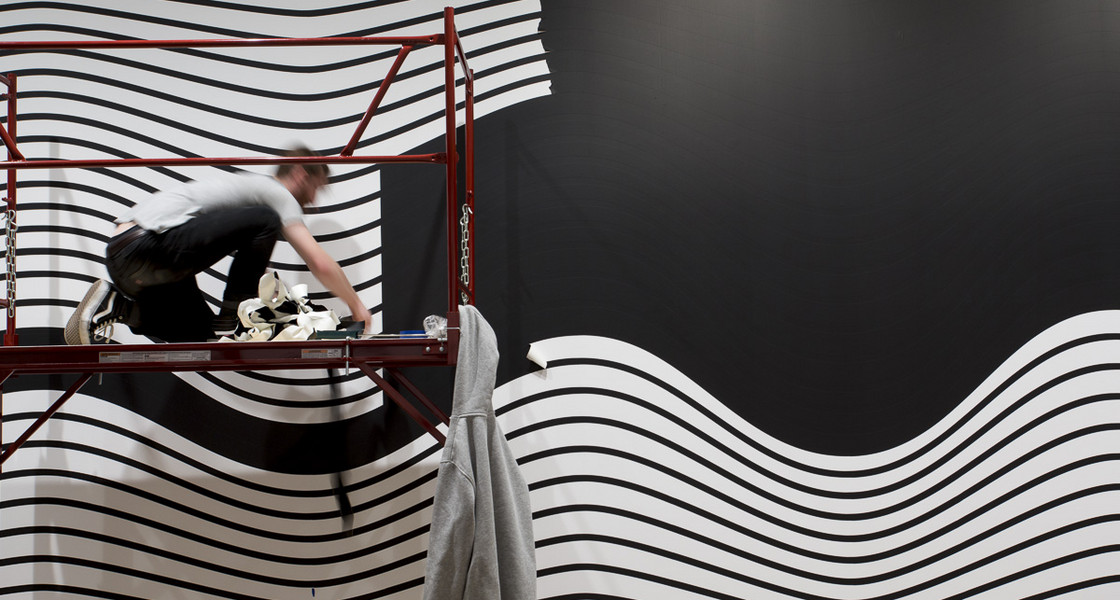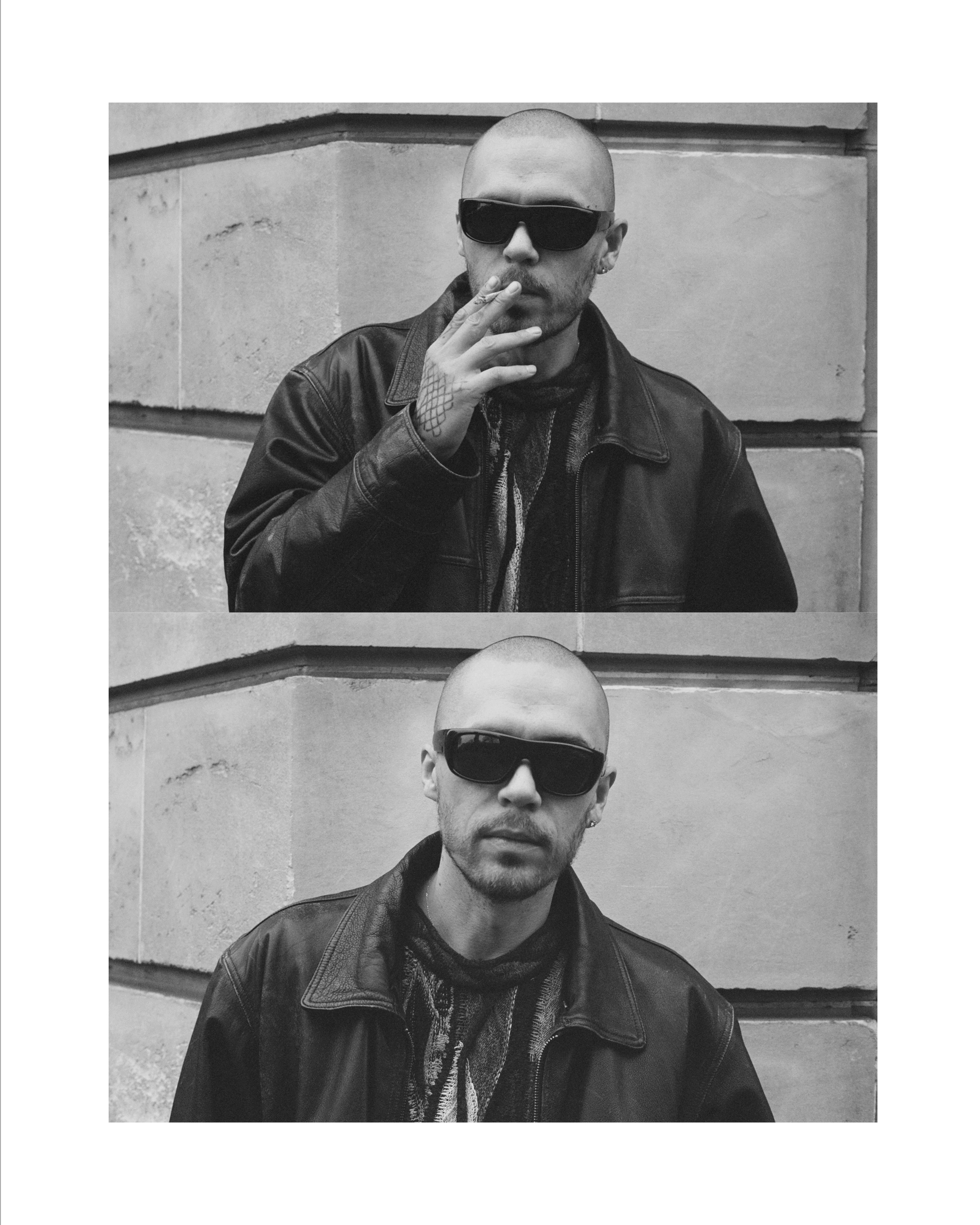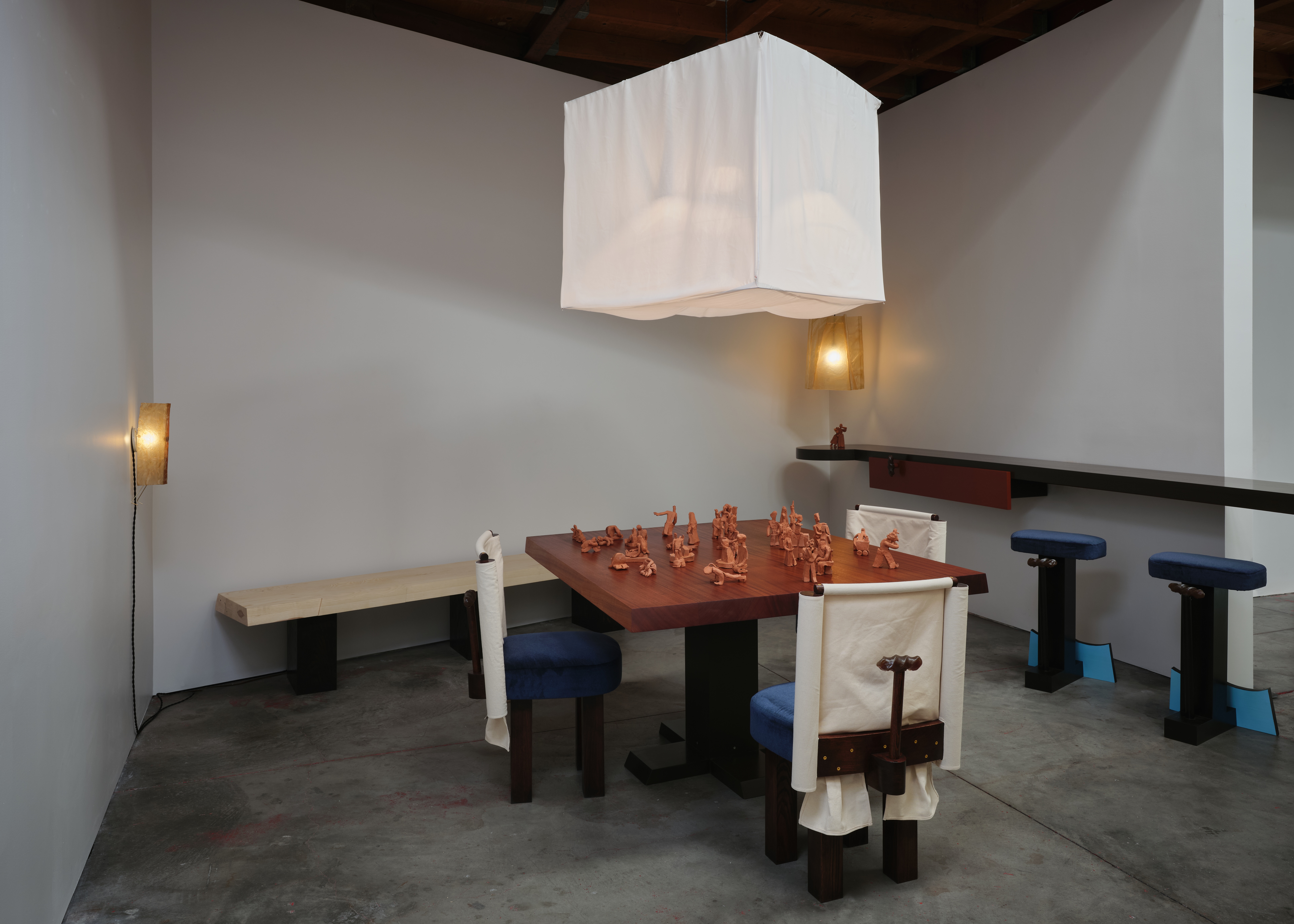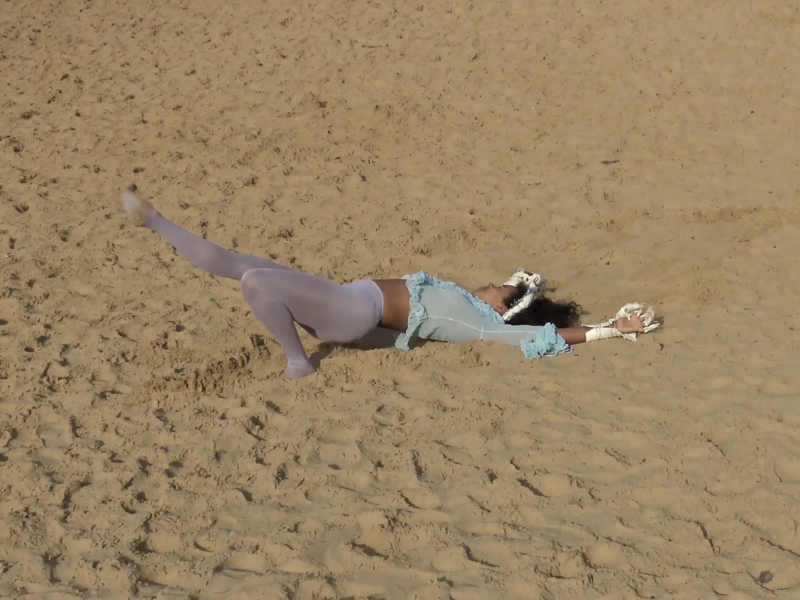Wave Cave
Combining the idea of ancient cave paintings with modern science may seem like an impossibly daunting task, but Comte makes the leap across the entire spectrum of human history with seamless alacrity. One is reminded of Plato’s ideal realm—the purity of this miniature world Comte has created feels almost like art heaven, where lines are born and shapes rest between their nine lives.
office spoke with the artist to discuss her enchanting exhibition, The Morphing Scallops.
I love the idea of using something we know exists but cannot see—like a sound wave. How did you arrive at using something so scientific in your work?
My work always oscillates between what seduces on the surface and what lies hidden beneath—or rather, I am attempting to reveal something a little more out-of-sight, ungraspable, oblique or mysterious. Insofar as music and art are already infused with basic mathematical truisms that stem from our natural environment, my work is always already incorporating nature’s scientific tools. It intrigues me to make naturally occurring shapes and patterns more visible, more evident.
What natural force that isn’t visible to the naked eye would you most like to be able to see?
I would love to see all sorts of 'energy flows,' like nervous systems as they ripple through trees, as they flow through bodies, in humans, in all animals. It would be truly astonishing to see the aura of things—to learn to empathize faster and to understand our surroundings sooner.
Your work is both primal and intellectual. Do you feel these two forces are at odds with each other in the modern world?
While it’s paradoxical, when these forces are in balance rather than in opposition, something powerful is created—something that leads me in the right direction artistically. We understand that the human condition and the world we inhabit are vast and complex. For this reason, it feels productive to embrace cognitive dissonance, hybridity, ambiguity and paradox, or more to the point, non-binary thought processes, especially when considering the environment or identity, for example. It enables a more inclusive and expansive mode of thinking. After all, it can rain while the sun is shining.
There's this idea of the cave in the installation—can you talk about that?
The cave painting is a metaphor for a primal mark-making method—something that existed since the beginning of humankind. This is also what makes this exhibition so appealing to me—to keep objects out of the gallery and apply paint directly onto the walls as if the painting might permanently be there. Here, of course the walls cannot be preserved. Instead, I’m providing a concept that is transferable to a public space or to a collector's home. But what if these wall paintings were eternalized for a few hundred years? What would they say and how would they be read from this distance?
Does it make you sad that an installation like this is, by its very nature, temporary? Does that play into its potential impact?
For quite some time now I have created many different types of wall paintings and patterns and have split them into different families. I actually have dozens and dozens of sketches on my computer of forms and shapes already conceived just waiting to be transferred onto a wall one day. Now, some of them have materialized in the physical world, while others are still in sketchbooks. They all exist, nonetheless, in one shape or another, so its really more exciting than sad.
'Claudia Comte: The Morphing Scallops' will be on view at Gladstone Gallery in New York City through February 16.
All images courtesy of the gallery.











































